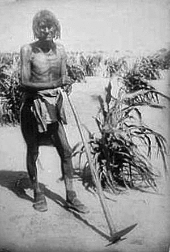posted 2 years ago
New stuff being discovered all the time!
_______________________________________________________________
Well, what makes corn unique is that the kernels exhibit physical characteristics from the pollen donor upon fertilization. Meaning, if I grow sweet corn near field corn, and some of the field corn pollen get onto the sweet corn silks, it'll fertilize the kernel. That's pretty obvious right, but if it's a yellow sweet corn or bi-color sweet corn (yellow & white) how would you know which kernels are outcrossed vs pollinated by sweet corn? If you eat it as sweet corn, you'll never know, nor will it matter. However, if you're saving seed for sweet corn, you'll let your chosen ears dry. At that time, it's very clear which kernels are sweet as they'll be wrinkled & shriveled in appearance (high sugar/less starch). The kernels pollinated by field corn will be hard rounded kernels.
From what I understand about color: If you start with a known all white corn variety, any other colored corn that pollinates the white corn will exhibit the color of the pollinator over the white background. I forget where I read it, but I think there are like 4 different pathways for corn color to express itself, but I don't want to misinform you since I can't remember where I read it. I know from my own corn projects, that anything not-white crossed onto white corn shows up as colored kernels. This is really only reliable when first starting a cross, not for long term selection I'd think.
If you're talking about being able to differentiate which kernels of Ohio blue were pollinated by commercial field corn (yellow or white), I don't believe you'll be able to tell visually since it will register as shades of blue. The white or yellow base colors may not show through. Chances are very strong that any Ohio blue you buy will likely already have been intermingled with other commercial field corns since it's used in all of the same commercial applications, just the blue color lends itself to nice fancy tortilla chips.
Good luck with whichever direction you want to go, lots of options & all of them are personal choice.
Dirty hands + a sweaty handkerchief = hope for the future.

 6
6





 5
5




 6
6




 5
5




 6
6




 8
8




 3
3




 3
3




 2
2




 2
2




 4
4




 3
3






 2
2











